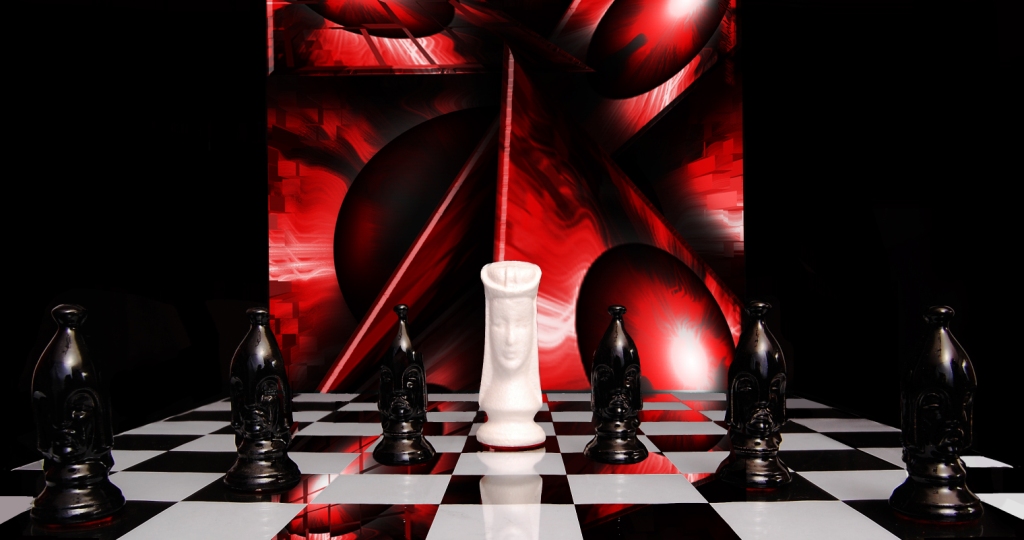 Reflections are a great tool for catching the viewers eye. Sometimes, the reflection is even better than the object being photographed.
Reflections are a great tool for catching the viewers eye. Sometimes, the reflection is even better than the object being photographed.
A reflections can be used to draw the reader’s eye into the photo, and can act just like their less colorful cousin, the shadow to help ground the object, or give the appearance of reality and three dimension where none exists. They can be used to bring color and interest to areas lacking. Reflection can be a powerful composition element.
The first “Big Trick” in this photo is that there was no “chessboard”!
No beautiful polished stone regulation board. Not even a cheap cardboard chessboard!
The only “real” items in this photo are the chess pieces. It’s actually a set I made in a high school ceramics class… way back when!
In this photo are:
(7) Ceramic Chess Pieces, (1) 16′x20″ Piece Glass (from a photo frame) 4 sheets of copy paper printed with 2×2 square pattern (courtesy of MS Publisher), cut to size and taped together, and I later introduced that previous graphic I had created in Photoshop for the background.
For most of my reflection photos I use either my white or black 36″x36″ piece of Plexiglas. Occasionally, I’ll use my clear 16×20 frame glass, but I’m always scared because it has such sharp edges and it’s so thin it could easily break.
For this photo, my regular chessboard would not work because it is set within a wood frame. I needed a flat surface with no edges AND no typical folded seam down the center like you’d have with a cardboard set. So I used MS Publisher (could have used Photoshop) to create a grid of 2×2 regulation B/W squares. Printed out that sheet plus 3 more to create the full board. Cut off the boarders and taped them together from the back.
Once placed under the reflective glass, no one could ever tell they were fake. No other correction on the board was done in Photoshop. If you’re really creative, you can think of all sorts of photos or scenes you could put under that glass to create an illusion of space or depth.
Consider getting or using Plexiglas or a piece of real glass in your photos to create all sorts of interesting reflections. Plexiglas is a bit expensive, but real glass is cheap and can be found at home centers or simply extracted from old picture frames. The beauty of real glass is that you can change the photo color or scene simply by putting something under the glass.
Here’s test for you. Can you spot the other two “tricks” in this photo?
Hint: What wrong with the “regulation” chessboard?
Answer: For symmetry, I had to add one extra row of squares to the right side.
Hint: What’s wrong with the “reflection” on the board?
Answer: Only the chess piece show a real reflection. The red you “see” reflected is actually a continuation of the red background as seen “through” the board. Notice there is no red seen reflected in the white squares. This was done by using a “Multiply” layer in Photoshop which ignores the white while affecting only black to give the appearance that you’re seeing a reflection, that’s what your eye expects.
I’ll bet you got the first answer right. If you got the second, you’re a real pro!
Using glass is a great photography trick that doesn’t require any software manipulation.
“Trick Photography and Special Effects” has tricks for those who love pure photography and for those who love to play with software like Photoshop…
See why everyone’s checking it out! Just click below…



